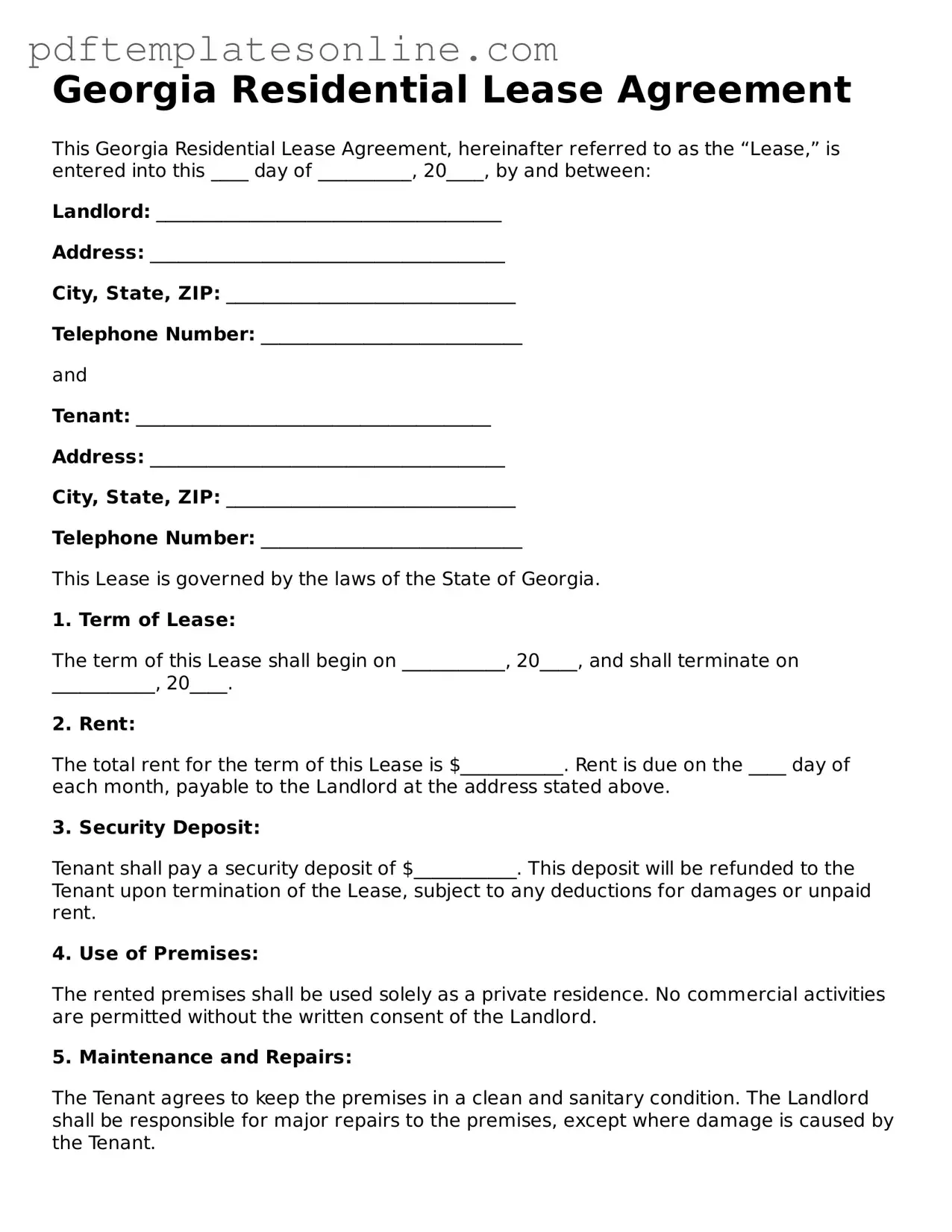Filling out the Georgia Residential Lease Agreement can be a straightforward process, but many people make common mistakes that can lead to confusion or legal issues down the line. One of the most frequent errors is not providing accurate information about the rental property. This includes the address, unit number, and other identifying details. When these details are incorrect, it can create problems for both the landlord and tenant in the future.
Another mistake often seen is failing to specify the lease term. The lease should clearly state whether it is a month-to-month agreement or a fixed-term lease, such as a one-year contract. Without this information, both parties may have different expectations about the length of the tenancy, which can lead to disputes.
Many individuals also overlook the importance of detailing the rent amount and due date. It’s crucial to include the exact monthly rent and when it is due each month. If this information is missing or vague, tenants might not know when to pay, leading to potential late fees or eviction notices.
Some people forget to include provisions regarding security deposits. The lease should outline the amount of the deposit, the conditions under which it can be withheld, and the timeline for its return after the lease ends. Neglecting to address this can result in misunderstandings and dissatisfaction for both parties.
Another common pitfall is not including maintenance responsibilities. The lease should clearly define who is responsible for repairs and maintenance. If these responsibilities are not laid out, tenants may assume they are not responsible for any upkeep, leading to disputes over property conditions.
Lastly, many individuals fail to read the entire agreement before signing. It’s essential to understand all the terms and conditions, even if they seem standard. By skipping this step, tenants or landlords may unknowingly agree to unfavorable terms or miss critical details that could impact their rights and responsibilities.
